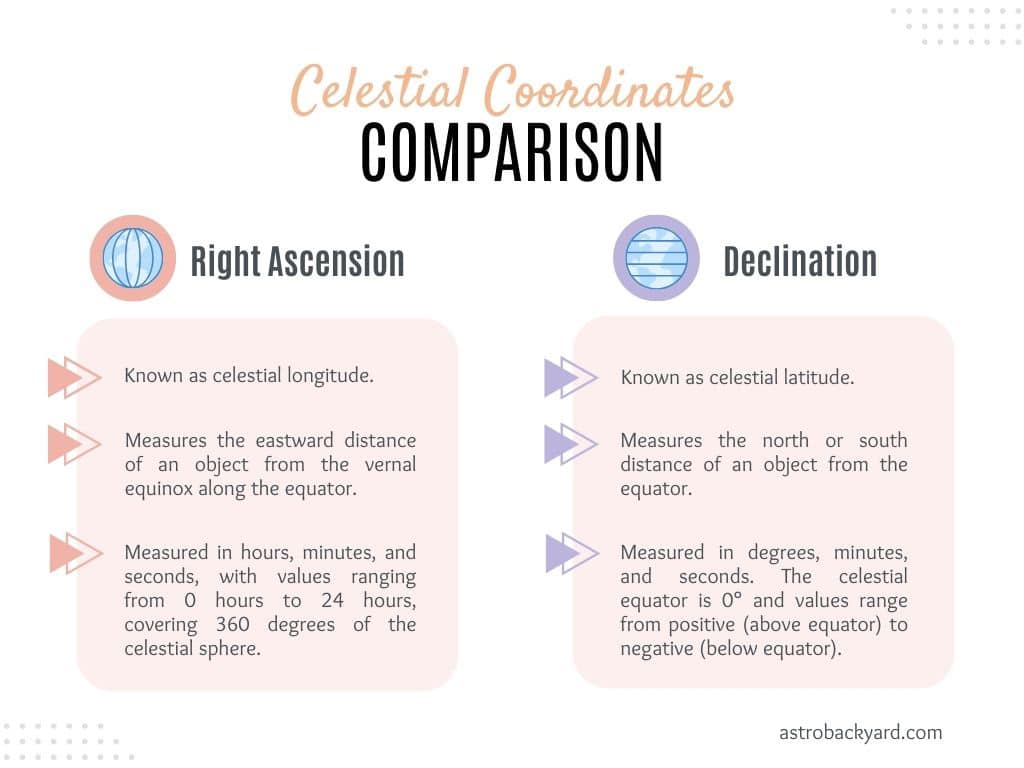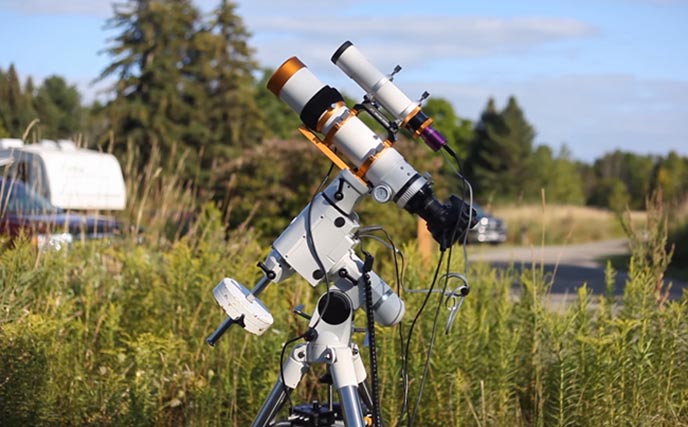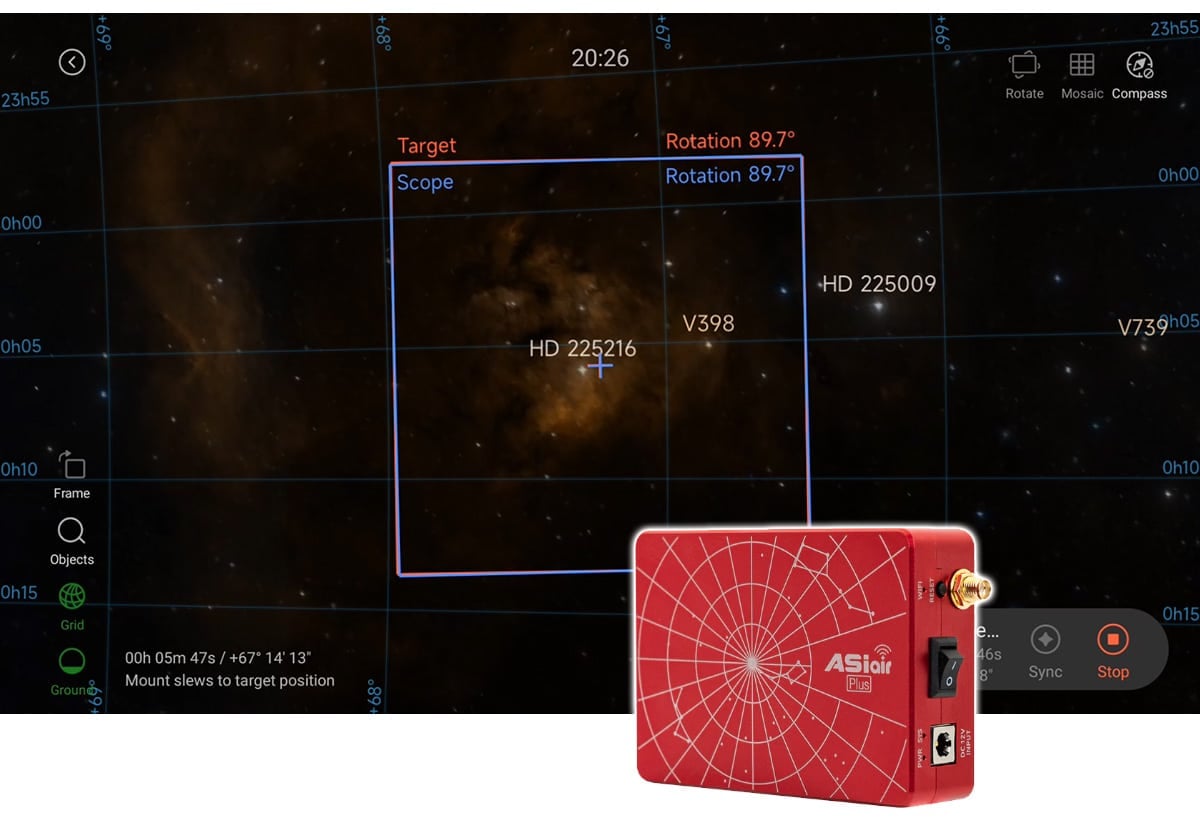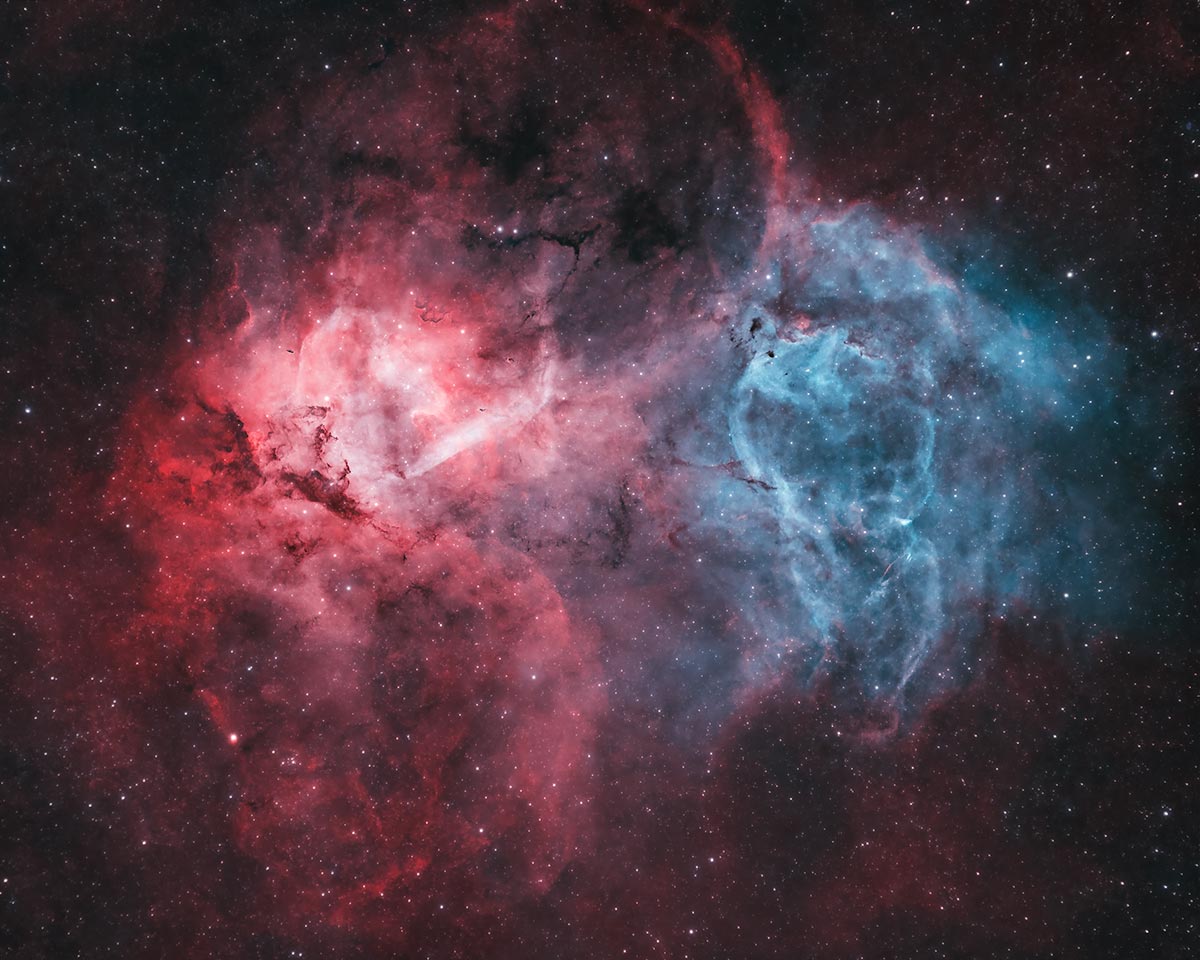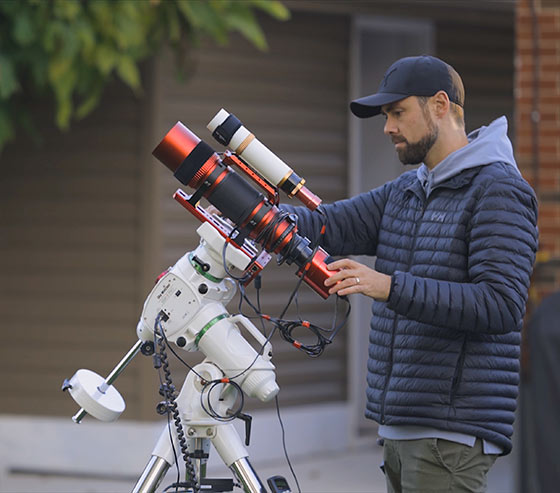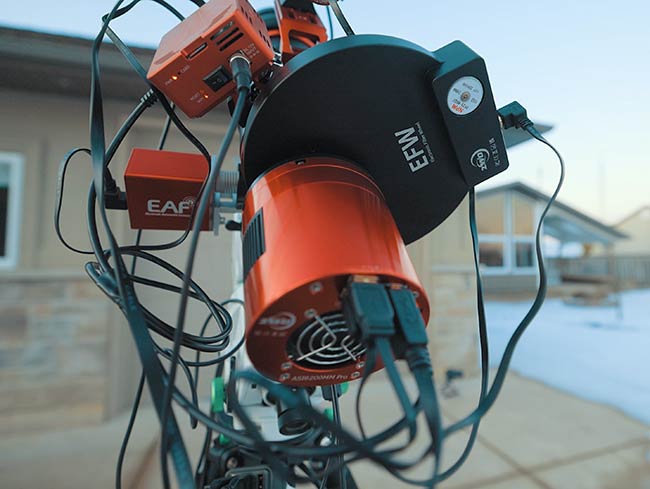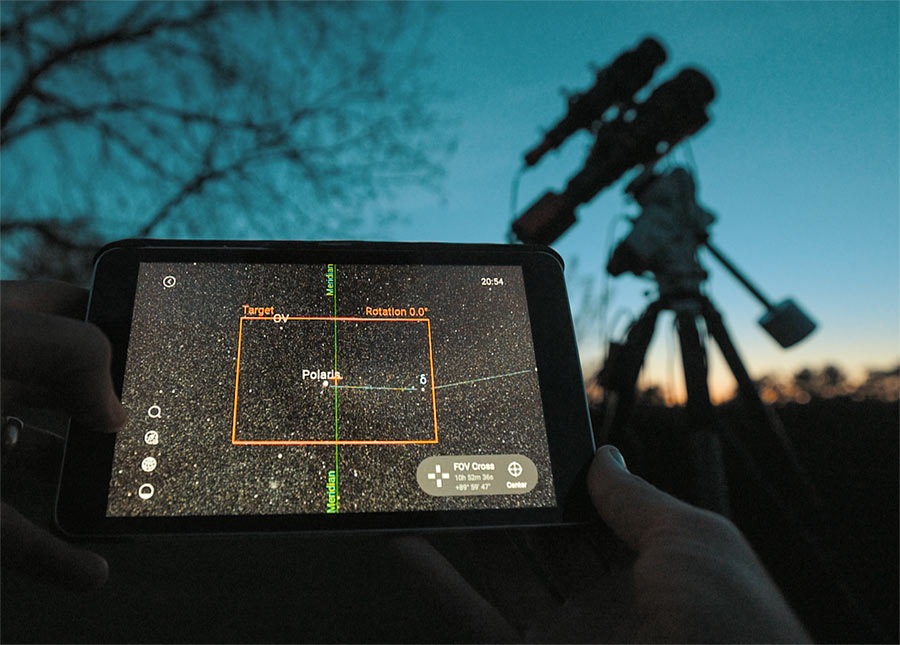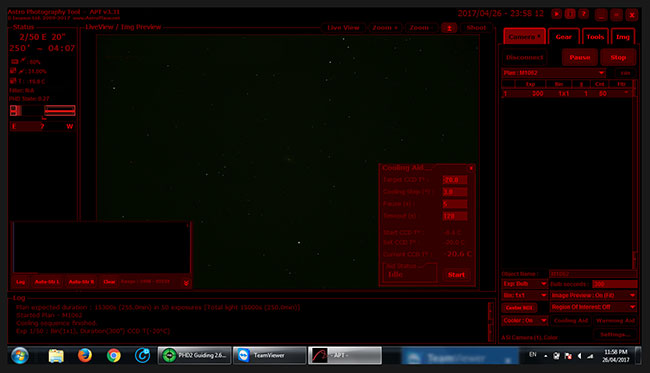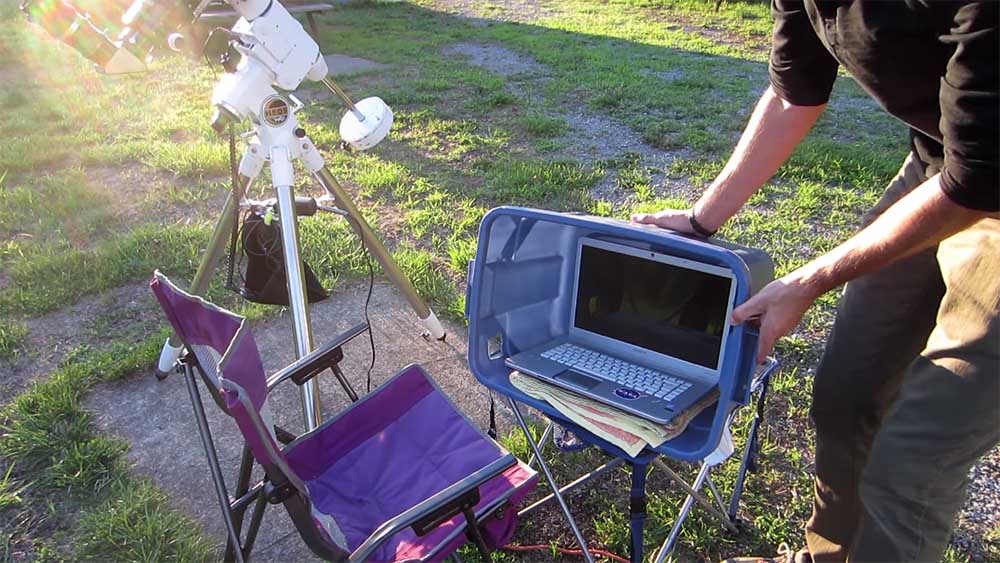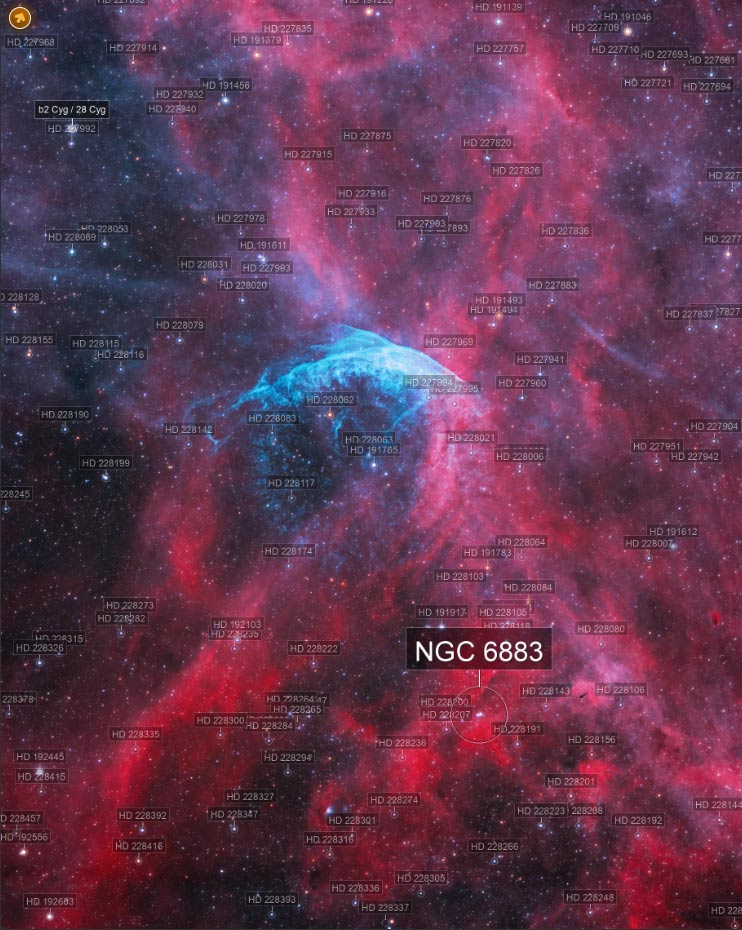What is Plate Solving?
Plate solving is a method used in astrophotography to determine the right ascension and declination coordinates of your deep-sky target to improve the pointing accuracy of your telescope.
It does this by analyzing star patterns in the image taken with your camera and comparing them to an existing catalog of star positions to get the coordinates for the center of the image.
Once it has the appropriate coordinates, your equatorial mount can accurately align and track your object, producing high-quality astrophotography images.
If you are looking to set up plate solving with the ZWO ASIAIR WiFi controller, be sure to read this post that describes the setup process. The setup shown below requires an RJ45 cable connection (via the hand controller port) to function.
Once this cable has been connected to your Sky-Watcher mount and the ASIAIR, you can fully utilize the plate solving features of the ASIAIR and Sky Atlas planetarium. You can see a complete deep-sky astrophotography setup in action in the following video:
In this deep-sky astrophotography how-to video, we utilize the plate solving function on the ZWO ASIAIR Plus.
Celestial Coordinates
A celestial coordinate system is used to locate objects in the night sky, similar to how we use latitude and longitude on Earth. It is used to locate stars, planets, galaxies, and other objects with precision.
As mentioned above, there are two sets of coordinates used:
- Right Ascension (RA): celestial longitude, is measured in hours (h), minutes (m), and seconds (s). It measures eastward along the celestial equator from the point where the Sun crosses the celestial equator from south to north (i.e. vernal equinox). The values range from 0 hours to 24 hours, with each hour representing 15 degrees of a full circle.
- Declination (Dec): celestial latitude, is measured in degrees (°), minutes (‘), and seconds (“). It represents how far an object is north or south of the celestial equator. Positive declination values indicate objects in the northern hemisphere, while negative values refer to objects in the southern hemisphere. The equator has a declination of 0 degrees and those poles +/- 90 degrees.
To identify the position of an object in the night sky, both right ascension and declination values are needed.
For example, the coordinates for the star Polaris are:
- Right Ascension (RA): 2h 41m 39s
- Declination (Dec): +89° 15′ 51″
Plate solving is used in many ways to aid in astronomy and astrophotography. From helping you dial in your polar alignment, to helping beginners find objects in the sky with their smartphone, plate solving is a lifesaver.
Not only can it help you make sure an object is completely centered in the eyepiece or camera, but it also saves a monumental amount of time by taking the guesswork out of the pointing process.
The Celestron StarSense Explorer Dob uses plate solving on your smartphone to help you find objects in the night sky.
Astrophotography Without Plate Solving
If you are using a GoTo mount but you are not currently plate solving, chances are you are doing a manual star alignment to align your mount and telescope.
Using the hand controller of your mount, you input the time, date, and your location coordinates. It will give you a variety of stars to choose from to conduct a star alignment.
Choose a bright star and center in the frame. Then complete this process with either two more stars (for a three-star alignment) or one more star (for a 2-star alignment).
This process tells your mount where certain stars are in the night sky based on your location and the date/time and gives it the information it needs to find your target and track it with accuracy.
If you are new to astrophotography, this process can take a long time and can also produce errors with tracking if your star alignment isn’t done correctly.
I used the 3-star alignment process to align my Sky-Watcher mounts before switching to the ASIAIR Plus.
How Does Plate Solving Work?
Plate solving involves using dedicated software and tools that were designed for this purpose.
The software identifies the position and brightness of the stars within the image. It compares these star patterns to a reference star catalog, which has the known star positions for millions of stars.
Based on the stars identified and their positions, it calculates the exact right ascension and declination coordinates for the center of the image.
The coordinates are used to adjust the telescope’s position to ensure it is pointed at the desired target, which is important for accurate tracking during your imaging session.
Once the telescope is precisely aligned, you have the ability to capture long-exposure images.
Using the Sky Atlas plate-solving feature of the ASIAIR with my Sky-Watcher EQ6-R Pro Mount.
When to Use Plate Solving
Plate solving in astrophotography offers several benefits that enhance the overall imaging experience and the quality of your images. But there are also times when plate solving just makes the most sense.
With limited clear nights, I’m sure you want to spend as much time imaging as possible. Plate solving allows you to complete the alignment process much more quickly than if you were to manually align your telescope. This means you can spend more time imaging and less time messing with your equipment.
Also, if you find yourself struggling to locate your targets, or wanting to image targets that are really dim or impossible to find, you are going to want to take advantage of plate solving. Not only will it help you find your dim target using the celestial catalog, but it will also assist in framing it for you.
Finding a difficult target (The Lion Nebula) using the ASIAIR.
Plate solving is especially helpful when capturing targets with dim amounts of OIII (Oxygen) gas that is nearly invisible until several hours’ worth of data have been collected. I found this to be the case when photographing WR 134, a Wolf Rayet Star with an associated nebula in Cygnus.
The other benefits of plate solving include:
- Removes Errors: it removes the need to manually align your telescope by automating the process, eliminating the potential for error and frustration.
- Better Tracking: ensures accurate alignment and tracking for your imaging sequence, which is needed for sharp, high-quality images.
- Image Multiple Targets: easily switch between targets without re-aligning the telescope, allowing for a more productive imaging session.
- Automate your Sequence: it can be integrated into astrophotography software and scripts to automate sequences and streamline your workflow.
- Improved Stacking: it can also be used in post-processing to align and stack multiple images seamlessly to improve your signal-to-noise ratio and overall image quality.
- Educational Value: displays information about the stars and coordinates which are great for learning the night sky.
The Lion Nebula framed using the ASIAIR.
Equipment Needed for Plate Solving
There are a few pieces of equipment you will need in order to take advantage of the benefits of plate solving. However, the specific equipment you choose will depend on your budget, experience level, and the complexity of your astrophotography setup.
Equatorial Mount (i.e. GoTo Mount)
An equatorial mount design has a right ascension (RA) axis, a declination axis (DEC), and a polar axis (the RA axis aligned with the celestial pole).
The DEC axis moves the telescope north and south, and the RA axis moves the telescope east and west. The polar axis of an equatorial telescope mount must be pointed towards the north celestial pole.
Some telescope mounts allow you to look through the declination axis to visually see the North Star, while others require electronically assisted polar alignment (such as the ZWO AM5).
Once aligned, the sky’s apparent motion from east to west can be followed (tracked) accurately to take long-exposure photographs of deep sky objects in space.
They also include a “GoTo” database of celestial objects that are selected using an external hand controller. The Sky-Watcher EQ6-R Pro (shown above) includes a database of over 40,000 objects.
Sky-Watcher has a reliable fleet of equatorial mounts to choose from including the highly portable Sky-Watcher Star Adventurer GTi, which has the ability to plate-solve.
Dedicated Astronomy Camera
A dedicated astronomy camera, (i.e. CCD or CMOS camera) capable of long-exposure imaging is also needed. These cameras are designed to capture deep-sky objects and have sensitivity to low-light conditions.
These cameras are designed to collect faint starlight (light photons) and record the data onto the sensor. Then, astrophotographers use image processing software to ‘pull up’ the underlying data for a beautiful picture.
A dedicated astronomy camera (ZWO ASI2600MM Pro) with a filter wheel.
Keep in mind, that the brand you choose will have a huge impact on your future equipment options. For example, the ZWO ASIAIR wifi device can only be run using ZWO ASI cameras.
A dedicated astronomy camera is recommended for plate solving because its sensor is sensitive enough to quickly record a field of stars and compare it with a database of the night sky.
It is possible to plate-solve with a DSLR camera and the right image-capture software. For example, Astro Photography Tool (APT) uses the ASTAP catalog to perform plate solving within the software.
Laptop or Camera Control Device
A laptop or camera controller (such as the ASIAIR) is needed to control your camera, mount, and plate-solving software. This can be done through a laptop or a wifi controller.

If you opt for a laptop to control your imaging session, you will need to download additional software for plate solving.
Options for both additional software and camera control options are listed below.
Plate Solving Tools
There are a lot of great tools and software that help with plate solving so you can remove the need to manually align your telescope. There are free and paid versions of software available. I have included some of the most popular options below.
ASIAIR
The ASIAIR is a dedicated hardware solution designed for ZWO cameras and mount users. It offers streamlined control and automation specifically for those devices and has become increasingly popular.
This tiny red aluminum box replaces your laptop computer, imaging software, USB hubs, power supply, and even your WiFi connection. And you can control everything on your smartphone or tablet (iOS and Android) using the ASIAIR app.
Once you have properly connected the ASIAIR to your equatorial telescope mount, you can control your imaging sessions with accurate GoTo functionality.
The SkyAtlas feature within the ASIAIR mobile app is absolutely amazing. It allows you to choose any object in the night sky, and the telescope mount will automatically find it and center it.
I am a huge fan of the ASIAIR and this is my current method for camera/mount control, autoguiding, and plate solving.
N.I.N.A
N.I.N.A. stands for Nighttime Imaging N’ Astronomy, and it is a popular and free open-source software application.
It includes a variety of tools and features to assist with astrophotography, including camera and telescope control, autofocus, sequencing, and pate solving.
Unlike the ASIAIR, N.I.N.A. can control various astronomy cameras, supporting both DSLR and dedicated astronomy cameras from different manufacturers.
It utilizes an integrated plate solving engine or connects to external plate solving software. Common plate solving engines include PlateSolve2 and Astrometry.net. These engines perform the actual plate solving calculations.
It can also interface with popular planetarium software like Stellarium to assist with target selection and telescope pointing.
Astro Photography Tool (APT)
APT is a camera control software for your laptop that supports a wide variety of astrophotography cameras, including Canon EOS, Nikon, and CCD or CMOS astronomy cameras.
The software allows you to control focus, framing, plate solving, scheduling, and much more.
APT Interface
The PointCraft feature of APT is powered by existing plate solving technology that was previously only available in professional observatories. There are two types of plate solving using APT: near and blind.
The ‘near’ method needs to know the approximate location of where you are currently pointed in the night sky, and ‘blind’ will discover this information for you.
Once PointCraft has successfully solved your image, you can then synchronize the telescope coordinates with your image coordinates.
Astrophotography setup using a laptop computer for image control
You’ll need to download an external plate solving application, such as PlateSolve2 by PlaneWave instruments. You’ll also need to unpack the required UCAC3 catalog.
For complete step-by-step instructions on the process, you should read the APT User Guide PDF. When I was still using a laptop for imaging, this was my preferred choice.
Astrometry.Net
Astronmetry.Net is a specialized online service and software package for astrophotography.
It is primarily known for its plate solving capabilities and its sophisticated pattern recognition algorithms used to identify the positions of stars and other celestial objects within the image.
It can be used as an online web service, where users upload their images for plate solving and object identification. There is also a standalone offline version available for those who want to use it without an internet connection.
Many planetarium and astrophotography software applications can interface with Astrometry.net. This provides a seamless experience for plate solving and object identification within the user interface.
Sequence Generator Pro
Sequence Generator Pro (SGPro) is a software application primarily used by amateur and professional astronomers to automate aspects of the imaging process.
Though it is primarily designed for automation, it does incorporate plate solving capabilities to determine the exact celestial coordinates of an image and adjust the telescope’s position if necessary.
Similar to N.I.N.A, it can also integrate with planetarium software (i.e. TheSkyX, Stellarium) to assist users in selecting/ locating targets.
AstroTortilla
AstroTortilla is a software application that allows you to add plate solving to your astrophotography routine.
This tool may seem a little complicated at first, but it is completely free and can work extremely well once it has been set up.
The ‘Light Vortex Astronomy’ website has a fantastic AstroTortilla tutorial for those interested.
AstroBin
While plate solving is most useful during the image acquisition stage of astrophotography, it can also be done on a final, processed image.
The AstroBin website has the option of plate solving your images after you upload them, which is very handy for other astrophotographers.
This way, others can identify the many deep-sky objects in the field that may have been missed. The plate solve overlay labels the objects making them easy to identify.
This plate solved image identifies the primary deep-sky object in the field, as well as several individual stars.
Final Thoughts
Plate solving, though it sounds complicated, is easy once you get the hang of it. The initial setup time is worth the effort, as you will save hours worth of time and frustration in the long run.
If you have an equatorial telescope mount, a dedicated astronomy camera, and a laptop or a camera control device, you should definitely give it a try. If you’re a beginner, I highly recommend taking the ASIAIR path, because I found that way to be the easiest.
The benefits far outweigh the complications of getting it up and running, and you can really level up your imaging. Take advantage of all the benefits to maximize your time under clear/dark skies, while maybe even capturing multiple targets in one night.

